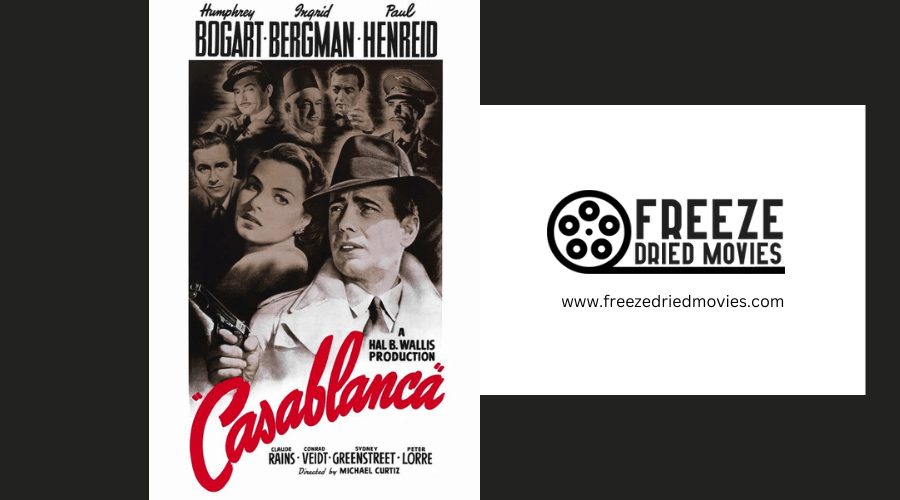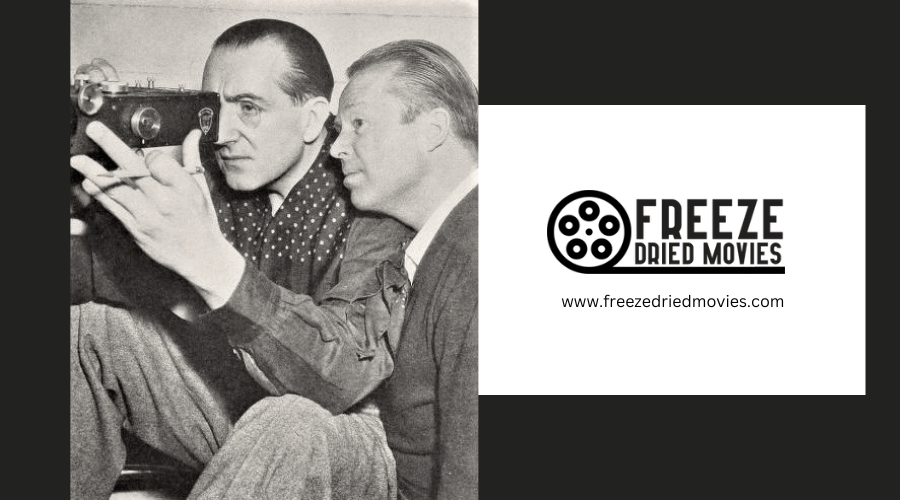How Did Technological Innovations Shape 1940s Cinema?

In the 1940s, cinema underwent a significant transformation due to technological innovations. Multichannel sound systems, notably Disney's Fantasound introduced in 'Fantasia,' provided audiences with a more immersive audio experience. The widespread adoption of Technicolor technology allowed films to be produced in vibrant colors, enhancing the visual storytelling.
However, widescreen formats like Cinerama and Cinemascope were not introduced until the 1950s, so they did not influence 1940s cinema. Advances in special effects, editing, and cinematography during the 1940s enabled filmmakers to tell more complex stories and create more engaging visual effects. These technological advancements not only revolutionized film production processes but also significantly impacted how audiences interacted with and perceived films.
These changes laid the groundwork for future developments in cinema, influencing modern cinematic techniques.
Key Takeaways
- Fantasound, an early multichannel sound system, significantly increased audience immersion by enhancing the audio realism in films.
- The advancement of Technicolor technology made color films more common, greatly improving the visual appeal and storytelling capabilities of cinema.
- Introduction of widescreen formats, such as Cinerama, broadened the visual field, providing audiences with more captivating and expansive views.
- The use of miniatures and matte paintings in special effects brought greater authenticity and visual depth to film scenes.
- Innovations in film editing and cinematography, including the adoption of non-linear editing systems and innovative lighting techniques, expanded the range of narrative techniques and emotional impacts in filmmaking.
The Advent of Multichannel Sound
In the 1940s, Disney's Fantasia pioneered the use of multichannel sound, significantly enhancing the cinematic audio experience. This technology enabled the spatial distribution of sound elements, enabling audiences to feel as if they were in the midst of the scene, rather than just spectators.
Previously, cinema utilized mono sound, which combined all audio elements—dialogue, music, background noise—into a single channel transmitted through one speaker. Fantasia introduced the Fantasound system, which utilized multiple audio channels to add depth and realism to sound reproduction. This allowed for a dynamic audio landscape where sounds could be heard from various directions, enriching the audience's engagement with the film.
The introduction of multichannel sound established a new benchmark for audio quality in cinemas and initiated a series of advancements in surround sound technology that continue to enhance film viewing today. This technological evolution has deeply influenced narrative delivery and audience immersion in cinema.
Introduction of Color Film
As the 1940s progressed, the film industry underwent a significant shift with the adoption of color film technology. Previously accustomed to black and white films, audiences were now captivated by the vibrant and vivid colors that color films introduced. Technicolor, a major player in this advancement, enabled viewers to see films in a way that mirrored the richness of the real world.

Key impacts of color film on cinema during the 1940s include:
- Technicolor Dominance: This technology was central to the era, transforming films into visually striking spectacles.
- Expanded Artistic Possibilities: Filmmakers leveraged color to explore new creative expressions and artistic nuances.
- Enhanced Narrative Depth: Color added a new dimension to storytelling, enriching the conveyance of emotions and moods, which black and white films couldn't fully achieve.
- Increased Audience Engagement: The realistic and immersive nature of color films attracted more viewers and heightened the cinematic experience.
- Cinematic Evolution: Color film set new benchmarks for film production and altered audience expectations permanently.
The introduction of color film revolutionized not only the visual aspect of films but also enhanced emotional engagement and narrative depth, making cinema of the 1940s a richer and more memorable experience.
Widescreen Format Innovation
Widescreen formats such as Cinerama and Cinemascope, developed in the 1950s, significantly broadened the visual scope of cinema, providing audiences with a more immersive viewing experience. These technologies were pivotal not merely because of the increased size of the image but due to how they changed the art of visual storytelling. With aspect ratios like 2.55:1 or 2.35:1, these formats offered wider, panoramic views that enhanced the narrative, making the settings almost as integral as the characters themselves.
Such widescreen experiences allowed filmmakers to delve into more complex set designs and utilize innovative framing techniques that weren't feasible before, turning each frame into a visual spectacle. This expansion wasn't just a matter of adding width to the screen; it deepened the overall cinematic experience by enabling more dynamic interactions between the characters and their surroundings.
The introduction of widescreen formats marked a significant shift in film aesthetics, fostering a new wave of creativity among storytellers. It set a new benchmark during the 1950s, influencing not only the manner in which stories were told but also enhancing the visual impact of cinema, thereby transforming it into a more captivating and artistically rich medium.
Special Effects Techniques
Special effects techniques from the 1940s significantly advanced cinema, incorporating miniatures, matte paintings, mechanical effects, and more to create visually captivating scenes. These methods enhanced the realism and spectacle of films, exceeding audience expectations.
Here are key techniques used:
- Miniatures and Scale Models: Detailed replicas of buildings, vehicles, and landscapes allowed filmmakers to depict epic scenes economically without constructing full-scale sets.
- Matte Paintings: Artists painted scenes on glass panels, which were then integrated with live-action footage to extend sets beyond their physical limits, creating more expansive and fantastical visuals.
- Practical Effects: Real-time executions of explosions, crashes, and stunts brought an authentic excitement to action sequences.
- Optical Effects: Techniques such as rear projection and double exposure were used to merge multiple images, achieving effects beyond conventional camera techniques.
- Prosthetics and Make-up: Skilled use of make-up and prosthetics transformed actors into unique characters, enhancing the narrative and visual impact.
These special effects were crucial in narrative storytelling, enabling filmmakers to craft visually impressive and engaging stories.
The Rise of Animation

The 1940s were a pivotal decade for cinema, particularly in the realm of animation, with Disney leading the charge through influential films like 'Fantasia' and 'Dumbo.' This period was characterized by significant technological advancements that Disney pioneered, notably the introduction of the multiplane camera in 'Pinocchio,' which provided unprecedented depth and realism to animated scenes. This technology allowed audiences to experience a new level of detail and immersion.
Additionally, Disney's adoption of the xerographic process marked a significant evolution in animation production. This method enabled the direct transfer of animators' drawings onto cels, greatly accelerating production times while maintaining high artistic standards.
Warner Bros. also made substantial contributions to animation during this era with their Looney Tunes and Merrie Melodies series. Characters like Bugs Bunny and Daffy Duck not only entertained but also became cultural symbols, thanks to their distinctive, engaging personalities and the studio's own advancements in animation technology.
Film Editing Evolution
In the 1940s, the advent of non-linear editing systems such as the Moviola and Steenbeck significantly enhanced the film editing process. These systems allowed film editors to cut and splice film reels with greater precision than ever before. This technological advancement not only accelerated the editing process but also profoundly transformed narrative storytelling in cinema. Editors were empowered to create more complex narrative structures, manipulating time and space within films to deepen emotional impact and enhance storytelling depth.
Here's how these innovations influenced cinema:
- Precision Cutting: Advanced splicing techniques and manual cutting enabled smoother transitions between scenes, enhancing narrative flow.
- Efficiency: The rapid capabilities of non-linear editing systems allowed editors to explore multiple narrative paths more freely, fostering creative experimentation.
- Narrative Complexity: Improved editing tools facilitated techniques such as montage and parallel editing, adding layers to the narrative structure.
- Innovative Storytelling: With more sophisticated editing tools, filmmakers could develop more intricate and subtle narratives, expanding the possibilities of cinema storytelling.
- Foundation for Future: These technological advancements laid the groundwork for contemporary film editing practices and continue to influence filmmakers and editors today.
Thus, film editing in the 1940s was pivotal not merely for assembling shots but for crafting immersive, compelling cinematic experiences that engaged audiences globally.
Soundtrack Synchronization Advances
Advancements in soundtrack synchronization during the 1940s significantly enhanced the cinematic experience by more precisely aligning audio with visual elements. The shift towards sound-on-film technology during this era minimized technical issues that had previously disrupted movie screenings, such as unsynchronized dialogue and actions.
The introduction of variable density optical soundtracks was a key innovation. It not only improved sound quality but also ensured consistency across the entire film. Audiences could enjoy clear and constant levels of dialogue, music, and sound effects, which enriched the emotional and dramatic impact of the narrative.
These technological advances transformed the viewer's experience by allowing a more seamless integration of sound and visuals. This brought characters and stories to life in unprecedented ways. The progress made in the 1940s set the foundation for the immersive audio-visual experiences now expected in modern cinema, marking a significant era of technological evolution in film.
Lighting and Cinematography Developments
The 1940s marked a pivotal era in cinema, introducing advanced lighting and cinematography techniques that significantly transformed film aesthetics and narrative depth. These developments not only enhanced the visual appeal of films but also expanded the ways stories could be visually communicated. Let's explore these key innovations.
- Three-Point Lighting: This method, involving a key light, fill light, and back light, became crucial for adding depth and dimension to scenes, enhancing the perception of three-dimensionality.
- Deep-Focus Cinematography: This technique ensured sharp focus across all planes, from foreground to background, which heightened the realism of cinematic scenes.
- High-Key and Low-Key Lighting: These lighting styles were instrumental in setting the mood of a film. High-key lighting was typically used in scenes requiring a brighter, more innocuous feel, whereas low-key lighting facilitated a moodier, more tension-filled atmosphere.
- Advanced Lighting Tools: Innovations in lighting equipment allowed for more precise manipulation of light and shadow, enabling cinematographers to convey complex emotions and themes without relying solely on dialogue or action.
- Enhanced Realism and Visual Impact: These lighting advancements contributed to a more realistic and visually compelling narrative approach, enriching the storytelling process.
These cinematographic and lighting advancements of the 1940s not only revolutionized the film industry during that time but also laid the foundational techniques that future filmmakers would continue to refine and adapt, ensuring the ongoing evolution of cinematic arts.
The Impact on Narrative Styles
The 1940s heralded pivotal technological breakthroughs that significantly influenced narrative styles in cinema. Deep-focus cinematography, for example, provided clarity across different depths of a scene, enabling more complex visual storytelling. This technology allowed directors to construct intricate narratives, as every part of the frame could contribute to the story.
Sound technology also evolved dramatically, with the introduction of stereo sound in Disney's *Fantasia* marking a major advancement. This development wasn't merely about hearing more; it was about experiencing a scene in full immersion, with sound enveloping the audience and deepening the emotional and narrative layers of the film.
The introduction of new zoom lenses further transformed cinematic storytelling. These lenses provided directors the ability to smoothly transition focus within a scene, subtly guiding the audience's attention and emphasizing different elements of the story.
Here's a concise overview of how these technologies impacted narrative styles:
| Technology | Description | Impact on Narrative |
|---|---|---|
| Deep-focus Cinematography | Clarity across multiple scene depths | Enhanced visual storytelling |
| Stereo Sound | Immersive soundscapes | Enriched auditory experience |
| Zoom Lenses | Flexible focus and framing | Directed audience focus |
| Blue-screen Process | Enabled seamless integration of effects | Broadened narrative possibilities |
These technological innovations did not merely alter storytelling techniques; they expanded the scope of what could be narratively achieved, enriching the cinematic art form.
Conclusion
The technological advancements of the 1940s significantly transformed cinema. Innovations such as multichannel sound created immersive auditory environments, while the introduction of color film and widescreen formats enhanced visual realism. These developments, alongside improvements in special effects, animation, and film editing, facilitated more intricate and engaging storytelling.
Enhanced synchronization of soundtracks and refined cinematography techniques deepened the emotional resonance of films. Collectively, these technological innovations not only revolutionized film production methods but also profoundly impacted the viewer's experience, thereby influencing the evolution of modern cinema.




